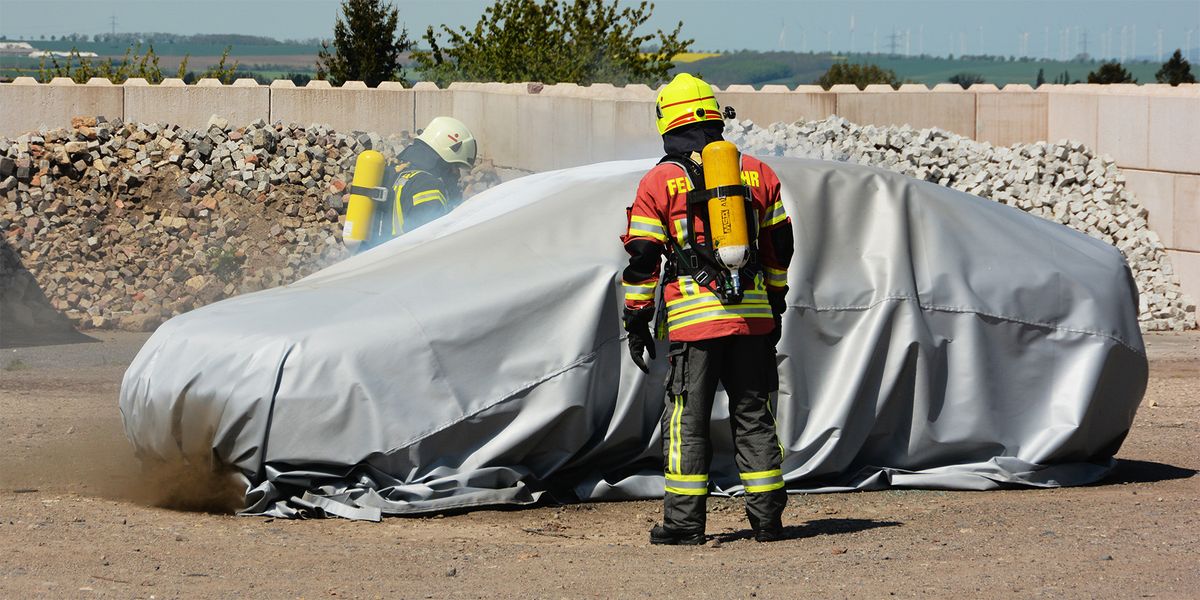
Photo credit: EngelchenFliegt
Urgent Safety Advisory on Hazards Involving Fire Blankets for Electric Vehicle Fire Suppression
Posted: June 11, 2025
- 2 min read
- Find similar articles:
- Fire Investigation
- Hazmat
- Health and Safety
The Fire Protection Research Foundation (FPRF), the research affiliate of the National Fire Protection Association (NFPA), and the Fire Safety Research Institute (FSRI), part of UL Research Institutes, issued a notice about the potential explosion risk when fire blankets are used during electric vehicle (EV) fire suppression efforts with battery involvement.
- During experiments, EV fire blankets were used to suppress an EV fire with battery involvement. The deployment of a fire blanket eliminated flaming by denying oxygen to the vehicle and the battery fire.
- The blanket eliminated the flaming, but battery thermal runaway propagation continued, resulting in the continued release and accumulation of flammable battery gases into the volume under the blanket.
- In some experiments, the accumulation of flammable gases under the blankets presented an explosion risk to firefighters operating near the vehicle.
- Reintroducing air into an oxygen-depleted accumulation of unburned flammable battery gases can increase the risk of an explosion.
First responders should take the explosion hazard into consideration in their operating procedures and tactics when using fire blankets, especially for fire incidents involving the release of flammable gases.
These findings became apparent during separate research experiments conducted by both organizations.
NFPA’s FPRF has conducted research to improve the safety of firefighters responding to EV fires and incidents by assessing the fire service's current firefighting tactics and tools. Assessment of EV Firefighting Techniques and the Impact on Stranded Energy, a research project funded by the Department of Homeland Security/Federal Emergency Management Agency Assistance to Firefighters Grant Program, will be presented at the NFPA Conference and Expo with a report to follow in the fall.
FSRI is also conducting research to improve understanding of hazards related to EV battery fires and to enable the development of firefighting tactics for effective EV fire control. Recent experiments for the Fire Safety of Batteries and Electric Vehicles research project were conducted to evaluate the capability of standard hose stream application, water application with an under-vehicle nozzle, and an EV fire blanket to suppress and establish control of a burning EV with confirmed battery pack fire involvement. Analysis of the video and data from FSRI experiments is underway and will be addressed in detail in FSRI’s forthcoming EV research report, which will be available at fsri.org.
